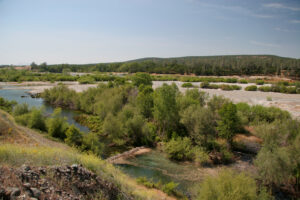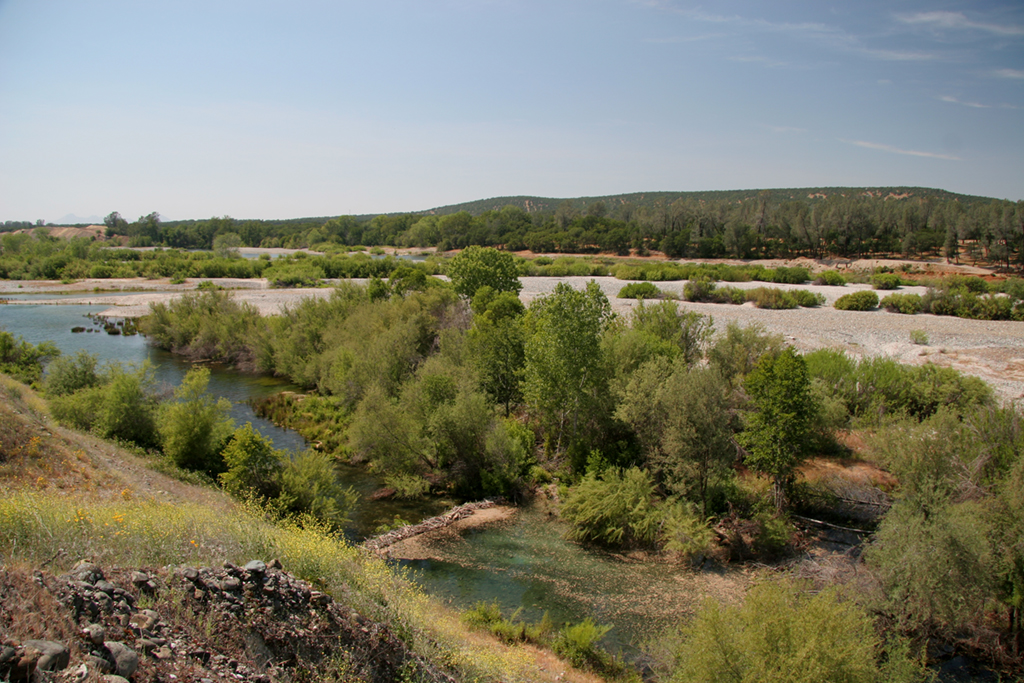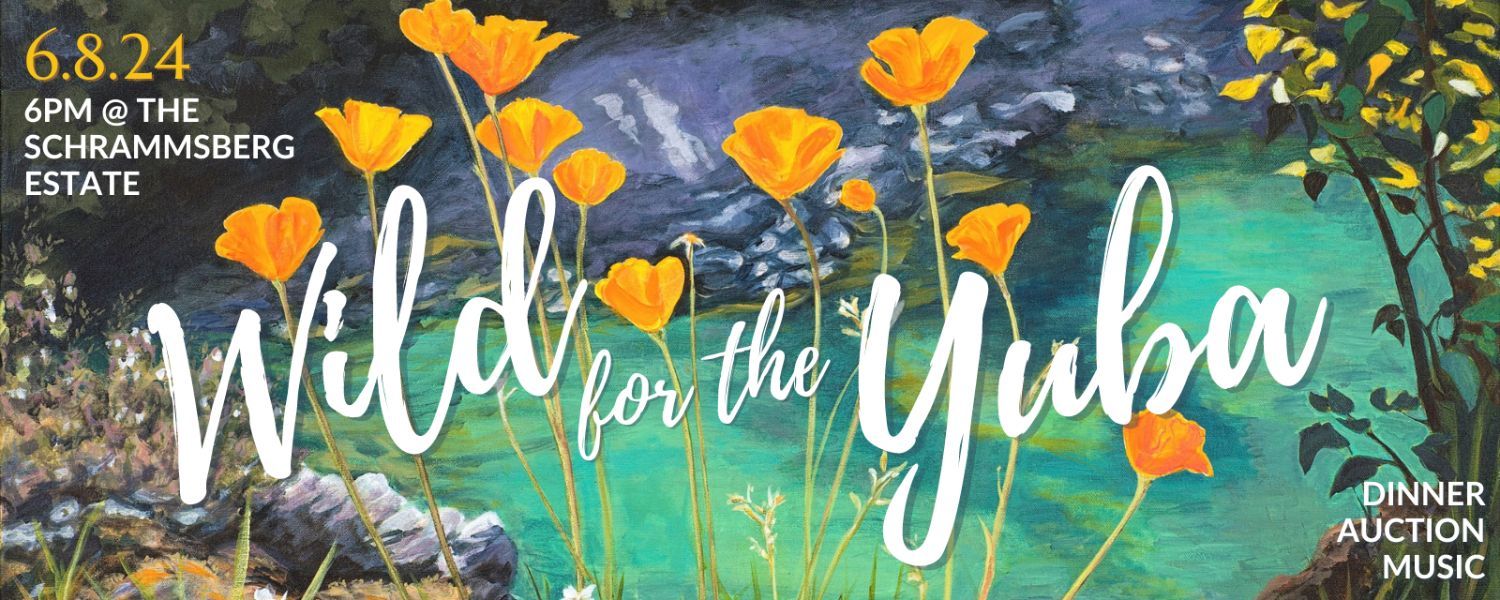Rehabilitating the Lower Yuba River – Step 1 begun by planting a thousand trees!

Only one year after completing the groundbreaking report, Concepts for Rehabilitation of the Parks Bar Reach of the Lower Yuba River, SYRCL has begun implementating the Hammon Bar Riparian Enhancement Pilot Project by planting 1640 large cottonwood and willow cuttings over the next few weeks. The cuttings are being planted where these types trees have not reproduced and grown due to the altered conditions of the river. Hundreds of cuttings have already been taken to the soaking pond, and today a backhoe crew now begins the planting work.
The Pilot Project will be provide habitat for salmon and wildlife while providing a testing ground for future projects. The pilot project is taking cuttings from isolated wetlands within the Goldfields, including some on land owned by Western Aggregates. SYRCL staff and volunteers spent hundreds of hours locating and marking these cuttings. A small local company has been contracted for the implementation work. Funding is in place for planting three times as many cuttings in the fall of 2012. The two-year project aims at planting over 6000 cuttings in a five-acre area. Moreover, the project has a detailed design that will evaluate the success of the cutting relative to a variety of specific methods and local conditions. Volunteers will be an important part of this success monitoring beginning in February.
Enhanced riparian habitat by this method is a small but significant start at rehabilitation of a river that is so damaged and yet so important to salmon and wildlife. Riparian trees are salmon habitat, not merely for food and cover, but also for the source of large wood that will eventually restore a complex aquatic habitat. As described in the Concepts Report, there are a variety of potential projects of larger benefit, including the restoration of side-channels or expansion of the floodplain, but these will require substantially more investment while benefiting from the techniques tested and refined in this pilot project.
Funding for this project comes from the Anadromous Fish Restoration Program of the US Fish and Wildlife Service, the California Department of Transportation and Western Aggregates, LLC. The Bureau of Land Management has provided the land and staff assistance.
Did you enjoy this post?
Get new SYRCL articles delivered to your inbox by subscribing to our ENews.



